Burra is a pastoral centre and historic tourist town in the mid-north of South Australia. It lies east of the
Clare Valley in the Bald Hills range, part of the northern
Mount Lofty Ranges, and on
Burra Creek. The town began as a single company mining township that, by 1851, was a set of townships (company, private and government-owned) collectively known as "The Burra". The
Burra mines supplied 89% of South Australia's and 5% of the world's copper for 15 years, and
the settlement has been credited (along with the mines at
Kapunda) with saving the economy of the struggling new colony of South Australia.
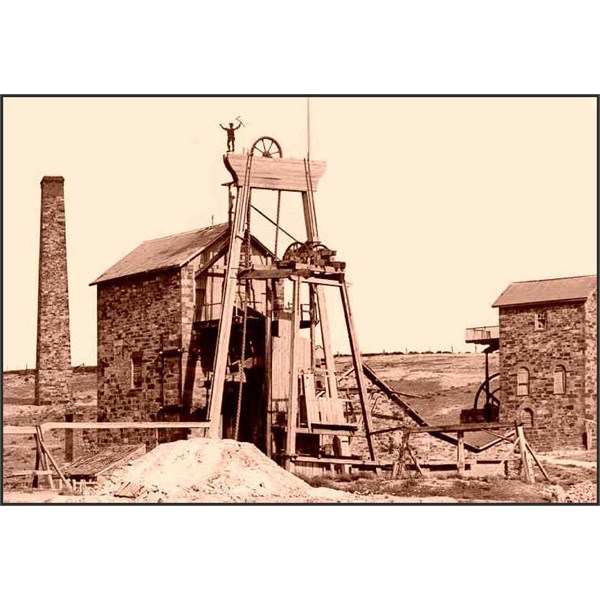
mine buildings at the Burra copper mine
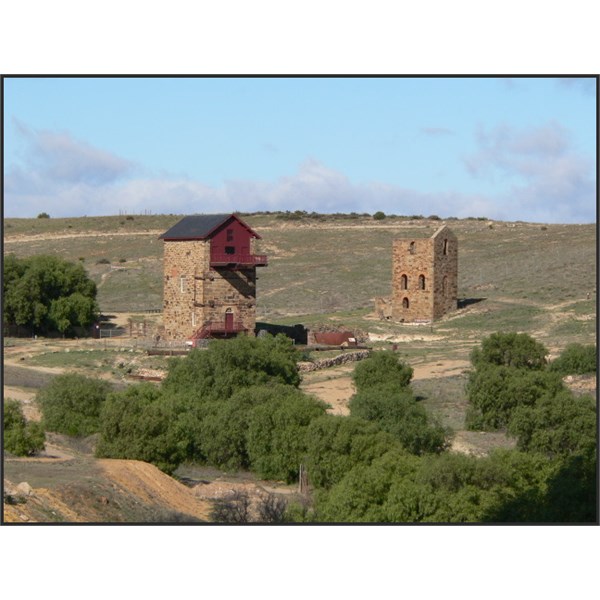
Old mine buildings at the Burra copper mine
The
Burra Burra Copper
Mine was established in 1848 mining the copper deposit discovered in 1845. Miners and townspeople migrated to
Burra primarily from Cornwall, Wales, Scotland and Germany. The
mine first closed in 1877, briefly opened again early in the 20th century and for a last time from 1970 to 1981.
When the
mine was exhausted and closed the
population shrank dramatically and the townships, for the next 100 years, supported pastoral and agricultural activities. Today the town continues as a centre for its surrounding farming communities and, being one of the best-preserved towns of the Victorian era in Australia, as a historic tourist centre
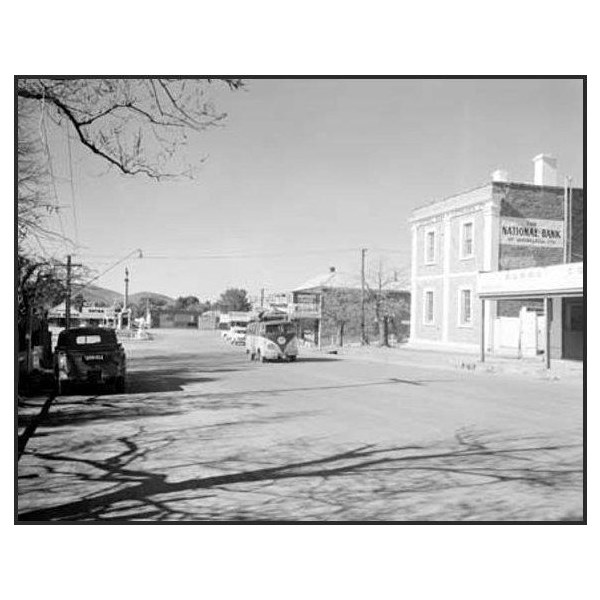
Main street of Burra 1960
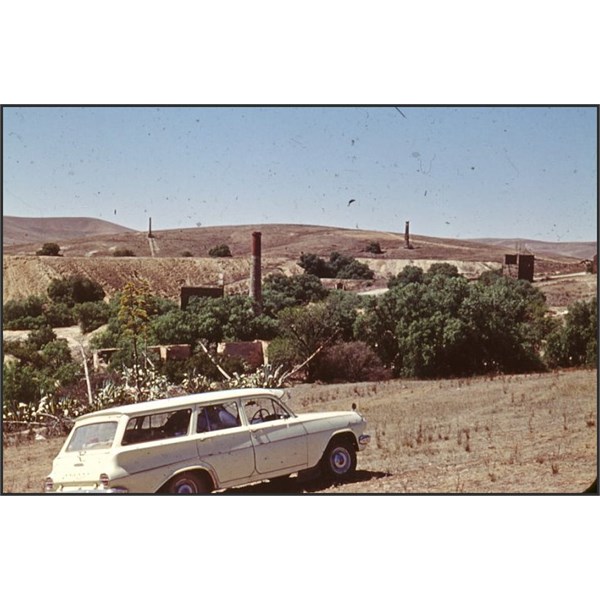
My Dad's 1963 EJ Holden at Burra Mines mid 1960s
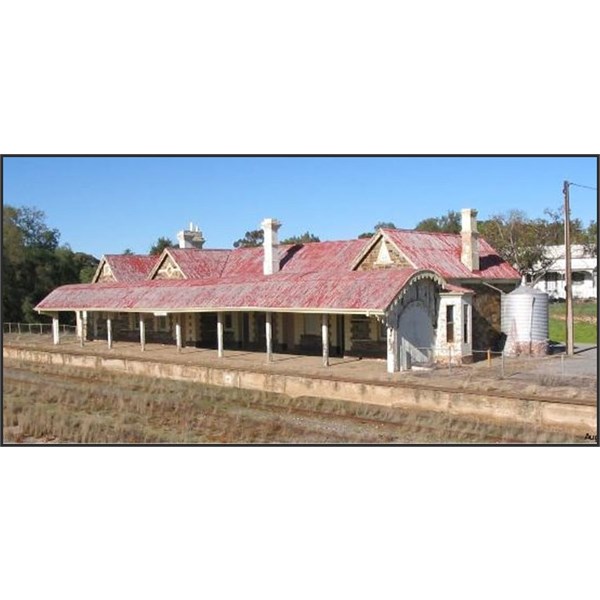
Burra Railway Station
The name
Burra Burra has been asserted to have come from numerous sources. As early as July 1843, when the locality was already a sheep outstation for pastoralist William Peter of
Manoora, it was known as Burrow
Creek. Despite that obvious (though misspelt) connection to the indigenous Ngadjuri people, a later theory persistently postulates that it comes from the Hindustani for ‘great great’, used by Indians shepherds working for another early pastoralist, James Stein, to refer to
creek. The name could also have come from Stein's home country of Scotland or a number of Aboriginal languages. A so-called 'English
Burra Burra' was discovered in 1851 in Devon in the Cornwall and West Devon Mining Landscape; possibly coincidentally several ancient placenames such as Burrator in Devon and Burraton in Cornwall occur nearby; also possible origins for the name. A
Burra Burra mine is located in Tennessee and named after the Australian one.
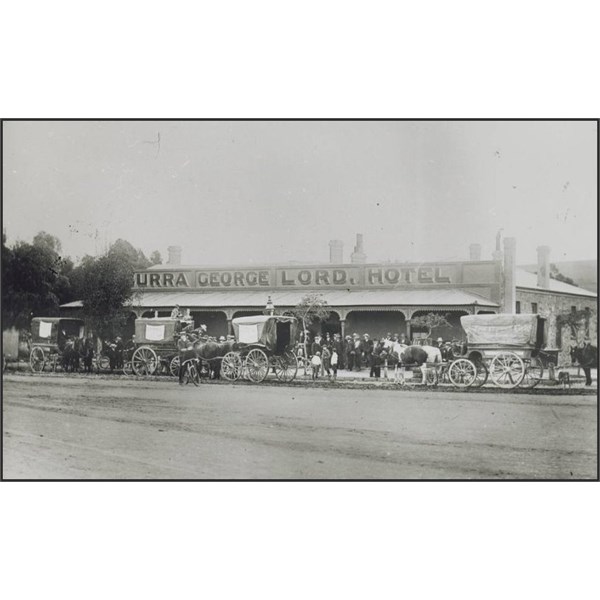
Cabs returning passengers to Burra Hotel after a football match 1906
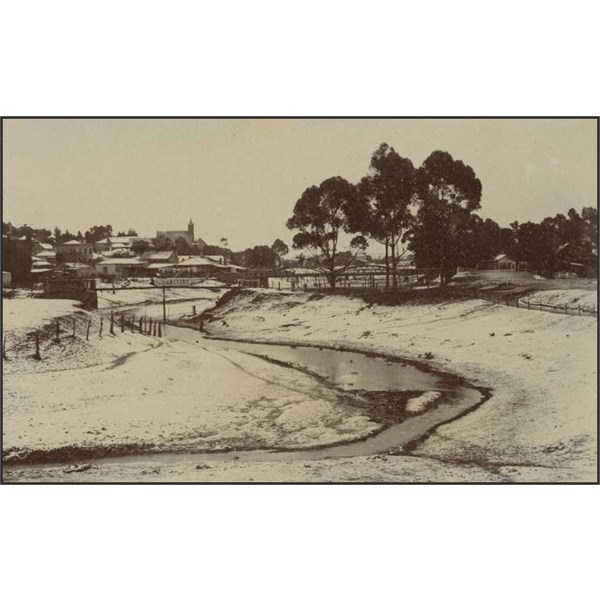
Snow covered ground with a town in the distance, 1910
On 9 June 1845 William Streair
bore samples of a rich copper ore into the office of Henry Ayers,secretary of the South Australian Mining Association . Streair, a
young shepherd in the employ of local pastoralist James Stein, had walked the 90
miles from
Burra as did Thomas Pickett, a shepherd on a neighbouring property who made a further find. News of the copper this heralded was published on 21 June in
Adelaide newspapers, and the site was soon named The Monster
Mine.

Sir George Grey
Governor George
Grey had amended land grant regulations forcing the hundred of Kooringa to be a 20,000-acre rectangle, placing the two copper finds at opposite ends. Due to the £20,000 (sterling) price of the land it was divided in two, with each half sold to a different group and the division decided by lot. The surveyed area was named the
Burra Creek Special Survey. It is 8 by 4
miles , divided into two squares, 4
miles to a side. A group of wealthy capitalists (known as "the nobs") purchased the southern half of the division and a group of shopkeepers, merchants and SAMA (collectively known as "the snobs") the northern half.
The
Burra Burra Mine was established by the nobs in their northern selection, the Princess Royal
Mine by the snobs in their southern. In 1846, 347 acres just north of the division was sold to the Scottish Australian Investment Company for £5,550 where they established the Bon Accord
Mine. Mining began on 29 September 1845 with the first gunpowder charge set off on the monster
Burra Burra copper lode and by mid-1846, the Bon Accord Mining Company had also commenced operations.
(Note re Snobs and Nobs: The news of the rich copper deposits near
Burra Creek soon spread around
Adelaide. Local businessmen soon began jockeying for ownership and divided into three groups. The “Snobs” included the local shopkeepers like Bunce, Stocks, and a shopkeeper named Graham. The "Nobs" were rich men in the area, including the man who owned the
Kapunda copper
mine. Lastly, the South Australian Company joined the contest. The Snobs soon joined up with S.A.M.A. to raise enough funds to order the survey. Grouping their assets was a good idea, but S.A.M.A.'s bank balance at the time stood a bit below £2,000. The three groups decided to join forces to order the survey. The three groups started negotiating with one another, with the idea that they would divide Streair and Pickett Lodes at a later point. The Snobs, when they tallied their contributions, came up £800 short. With the Snobs unable to pay their share, the Nobs and the Company joined together.)
Until 1860 the
mine was the largest metals
mine in Australia. From 1845 to 1877 the
mine produced approximately 50,000 tonnes of copper. The
mine was reopened as a modern open cut in 1971, operating for a decade with 24,000 tonnes of copper extracted. The
mine's
Adelaide operation was run by Henry Ayers, secretary of SAMA, from its opening until the 1890s.
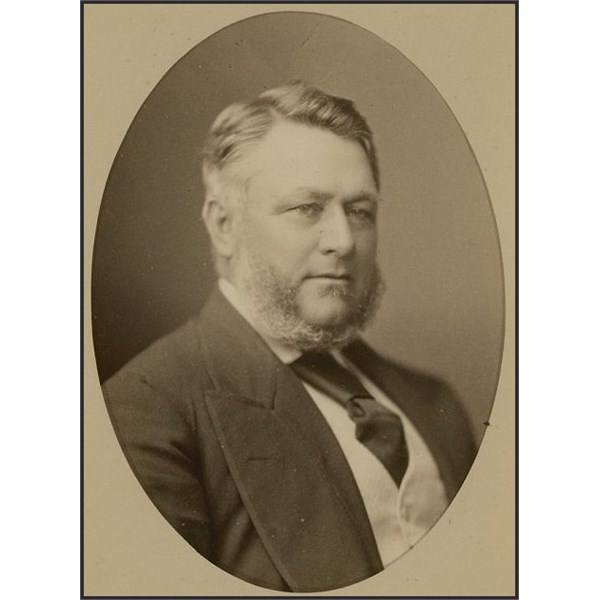
Sir Henry Ayers
The investors had put up a total of £12,320 of which £10,000 was spent purchasing the land. The first dividend was paid on 24 June 1847 and by 1 December 1847 the
mine had returned total dividends of £49,280. Over the
mine's 32-year life, less than 100 shareholders received £826,586 in mining dividends. All mining dividends stopped after the
mine closed in 1877, with the
mine area sold in 1902 and the last property of SAMA in Kooringa sold in 1914. A final dividend was paid on 5 May 1916 and SAMA was wound up and closed.
Most of the copper was for sale to India as it was taking over a third of world copper supply in the mid-19th century. Due to the lack of smelting in South Australia, copper ore was initially shipped to Cornwall. The company purchased a Cornish beam engine which was the first in Australia when erected in 1848. Due to the uneconomic state of the
mine, in 1868 a decision made to open cut the
mine. Mining ceased underground, having reached a depth of 600 ft and open-cut operations starting in 1870 although, over the remaining life of the
mine, small underground operations extracted more ore than the expensive open cut.
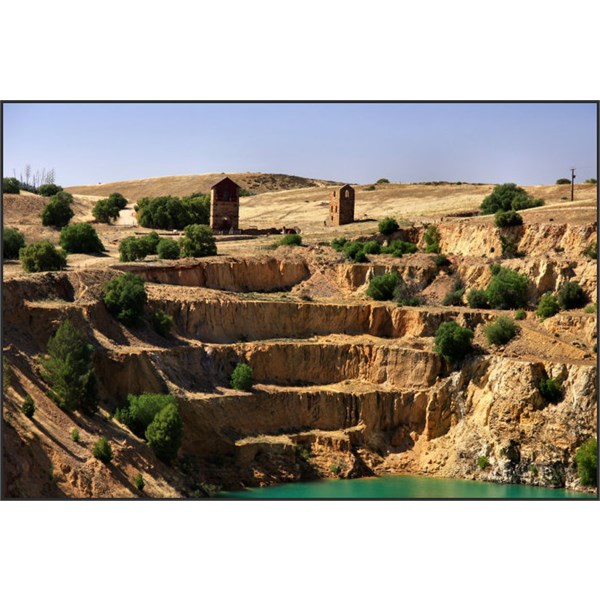
Burra Open Cut Copper Mine,
Over the life of the
mine, Henry Ayers jealously preserved shareholder profits by ruthlessly controlling wages and expenses. In October 1846 this caused the first strike, of masons and bricklayers, with the company refusing to pay more than 8 shillings per day. With declining copper prices (from £91 per ton in 1845 to £87 in 1848) the company continually sought to reduce wages. In August 1847 the company enticed Thomas Burr to take over as general manager, he having resigned his post as Deputy Surveyor General of South Australia, but by September 1848 the unsatisfied company directors had sacked him. By 1848 the wages reached their lowest level, which precipitated the
Burra miners' strike, being the first industrial strike in South Australia and earliest workers' strike of any consequence in Australia. The strike came and went numerous times, with miners not completely returning to work until January 1849.
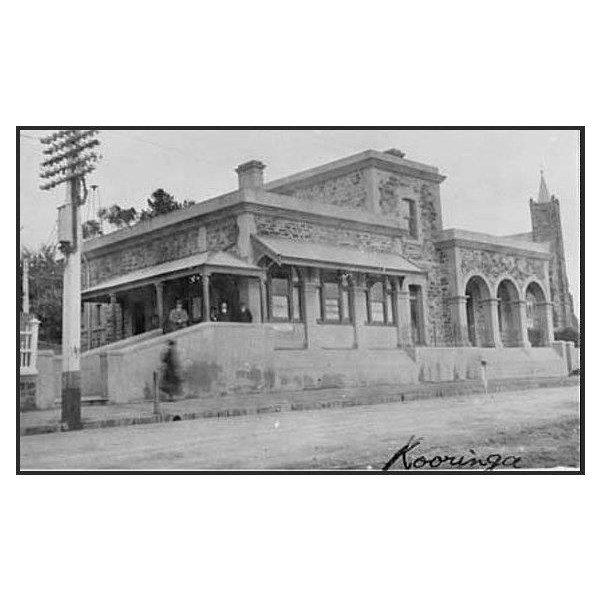
Old Burra Post Office 1901
By April 1848 the
mine was employing 567 people and supporting a
population of 1,500 in the township of Kooringa. Employment at the
mine peaked at 1,208 in 1859 and declined continuously until the
mine's closure in 1877. In November 1877 most of the remaining disposable equipment and stores were sold off and mining by SAMA ceased.
.